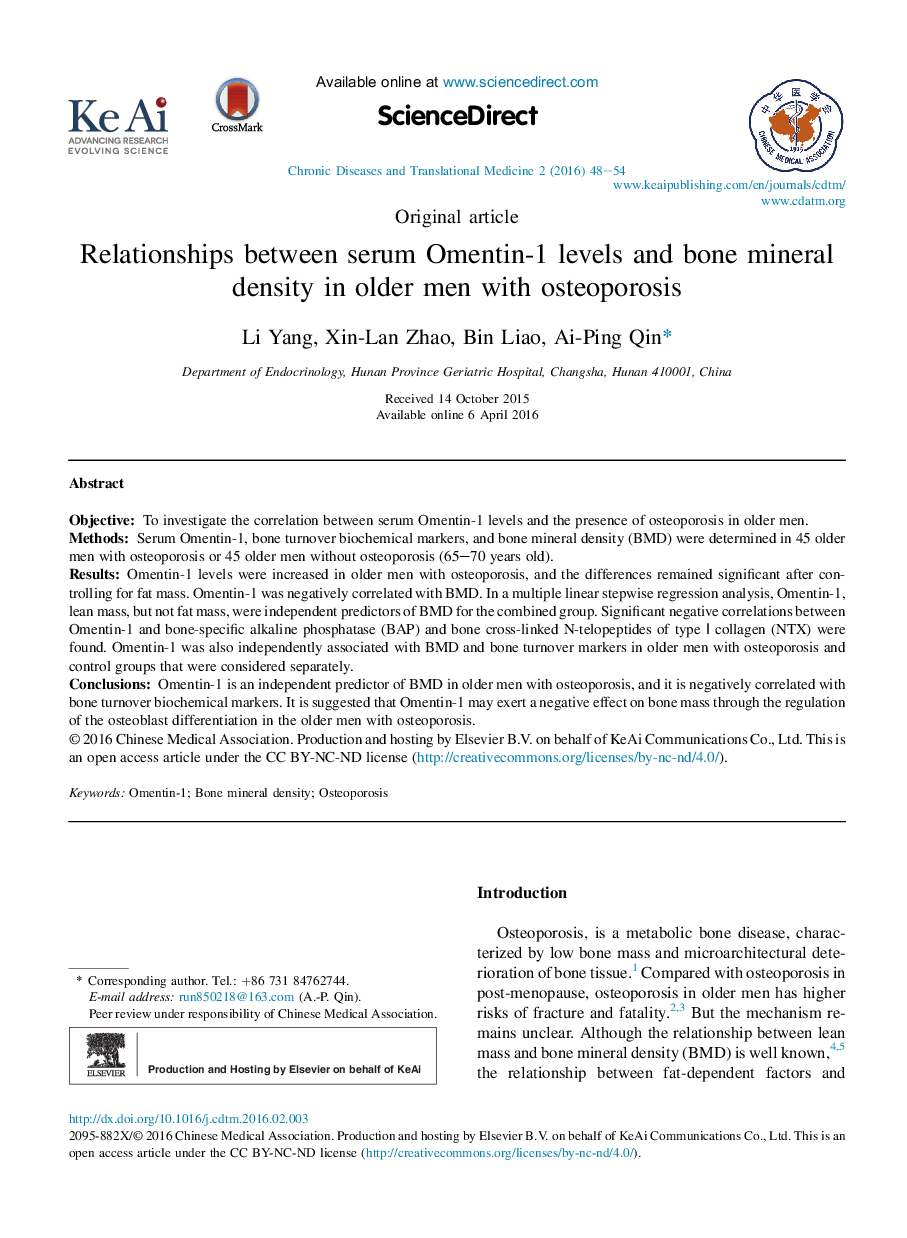| Article ID | Journal | Published Year | Pages | File Type |
|---|---|---|---|---|
| 3459882 | Chronic Diseases and Translational Medicine | 2016 | 7 Pages |
ObjectiveTo investigate the correlation between serum Omentin-1 levels and the presence of osteoporosis in older men.MethodsSerum Omentin-1, bone turnover biochemical markers, and bone mineral density (BMD) were determined in 45 older men with osteoporosis or 45 older men without osteoporosis (65–70 years old).ResultsOmentin-1 levels were increased in older men with osteoporosis, and the differences remained significant after controlling for fat mass. Omentin-1 was negatively correlated with BMD. In a multiple linear stepwise regression analysis, Omentin-1, lean mass, but not fat mass, were independent predictors of BMD for the combined group. Significant negative correlations between Omentin-1 and bone-specific alkaline phosphatase (BAP) and bone cross-linked N-telopeptides of type Ⅰ collagen (NTX) were found. Omentin-1 was also independently associated with BMD and bone turnover markers in older men with osteoporosis and control groups that were considered separately.ConclusionsOmentin-1 is an independent predictor of BMD in older men with osteoporosis, and it is negatively correlated with bone turnover biochemical markers. It is suggested that Omentin-1 may exert a negative effect on bone mass through the regulation of the osteoblast differentiation in the older men with osteoporosis.
